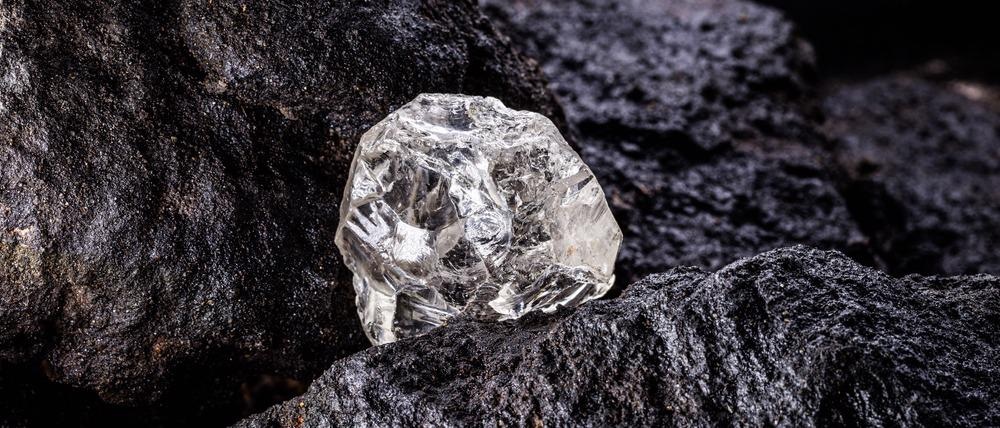The latest research in the journal Diamond and Related Material focuses on a novel diamond multi-layer graphene nanohybrid (DMGN) film, which offers better characteristic features for surface-enhanced Raman spectroscopy (SERS) sensitivity analysis.

Study: A three dimensional porous diamond-multilayer graphene nanohybrid film for surface-enhanced Raman spectroscopy. Image Credit: RHJPhtotoandilustration/Shutterstock.com
Surface-Enhanced Raman Spectroscopy
The process of Surface-Enhanced Raman spectroscopy (SERS) is a verified surface-sensing technique in which light scattering (Raman scattering) by substance molecules is greatly enhanced via the use of nanostructures.
The establishment of SERS is a relatively recent event compared to other methods; Fleischmann and his colleagues unintentionally reported it in 1974 when measuring the Raman scattering of pyridine substance on coarse silver electrodes.
The electromagnetic mechanism (EM) and the chemical mechanism (CM) are highly established enhancing processes for the SERS.
Industrial Utilization of SERS
SERS has been extensively used in various disciplines, including the food hygiene industry, biomedical research sector, and environmental sensing, as a trusted process with appreciable sensitivity and a quick detection approach. Materials science and technology, forensic science, and archaeological research analysis also utilize SERS.
Past Limitations
SERS substrates conventionally include the nano-structured specialized molecules of noble metals, notably including Gold and Silver. Noble metal-based SERS films have certain drawbacks, including expensive costs, inadequate repeatability, extensive thermal discharge, quick oxidizing, limited endurance, and poor biomedical applications.
The novel study is focused on the synthesis of diamond-multilayer graphene nanosheets in a vertical orientation on Silicon wafers.
Importance of Graphene
Graphene is among the most durable substances ever discovered, even stronger than diamond with a honeycomb crystal lattice structure. Properties like its tensile qualities, mechanical and electrical properties have ensured that Graphene is a valuable component of nanostructures.
The aerospace sector, nanomaterial synthesis, and wide use in battery and superconductor technologies are a few examples of this material’s industrial applicability. Graphene oxide has also been used as an additive in airplane fuel for efficient combustion and greater power generation.
Research Findings
The researchers initiated with the thorough observation of the nanostructure of the thin film substrate. A 3D porous morphology with a thickness range of 10 – 15 nm was observed, confirming the co-existence of diamond and graphite substances. The uniform wall-like structure observed could be regarded as a source material porosity and high density displayed as darker sections in Electron Microscopy.
The SERS detection of the RhB molecules on the DMGN substrate revealed characteristic peaks in the result even when there are critically low RhB molecules than the standard value, indicating the high quality of the DMGN film as a SERS substrate. Another major result that provides a core advantage is the stability analysis. It was observed that only 17.5% intensity decay is observed after a massive 45 days exposure to air, which is a sign of excellent stability.
Limitations of the Study
Although the results confirmed its effectiveness during the SERS process, a few notable limitations were observed. For instance, it was revealed that the characteristics of DMGN film substrate were hydrophobic, with a contact angle up to 137°; this surface property causes hindrance in the molecular adsorption on the surface layer. To remove this unwanted property, a treatment technique was necessary to permit its truly viable utilization.
To increase SERS performance even further, a simple wet-chemical oxidation treatment was carried out with a hydrogen peroxide solution utilized in the process as a chemical oxidizing agent.
Importance of Oxidation Treatment
The implementation of the oxidation treatment was very effective in reducing the contact angle, which in turn was useful in bringing the hydrophobic property within a viable limit to not hinder the effectiveness of the substrate films. The concentration of oxygen functional groups also increased from 2% to around 11%. These results were concrete proof that a simple wet-chemical oxidation technique easily modified the substrate to substantially increase its efficacy.
Future Perspective
The novel study has paved the way not only for laboratory and research experimentation but also for industrial utilization of such films for SERS analysis. The properties attained via the study results make it a bright candidate for Ultra-Violet SERS analysis, especially for biocompatible molecule detection in the recent future. Apart from SERS, research should also be done for their use in Tip-enhanced Raman Spectroscopy (TEPS).
In short, a unique DMGN film was carefully synthesized for use in SERS monitoring. Due to its advantageous properties, it would soon take over the classic substrate films conventionally used for the process.
Continue reading: How Graphene was Found in 4.5 Billion-Year-Old Meteorites.
References
Qu, H. et al., (2021) A three dimensional porous diamond-multilayer graphene nanohybrid film for surface-enhanced Raman spectroscopy. Diamond & Related Materials. 21. 108737. Available at: https://www.sciencedirect.com/science/article/pii/S0925963521005008?via%3Dihub
Disclaimer: The views expressed here are those of the author expressed in their private capacity and do not necessarily represent the views of AZoM.com Limited T/A AZoNetwork the owner and operator of this website. This disclaimer forms part of the Terms and conditions of use of this website.